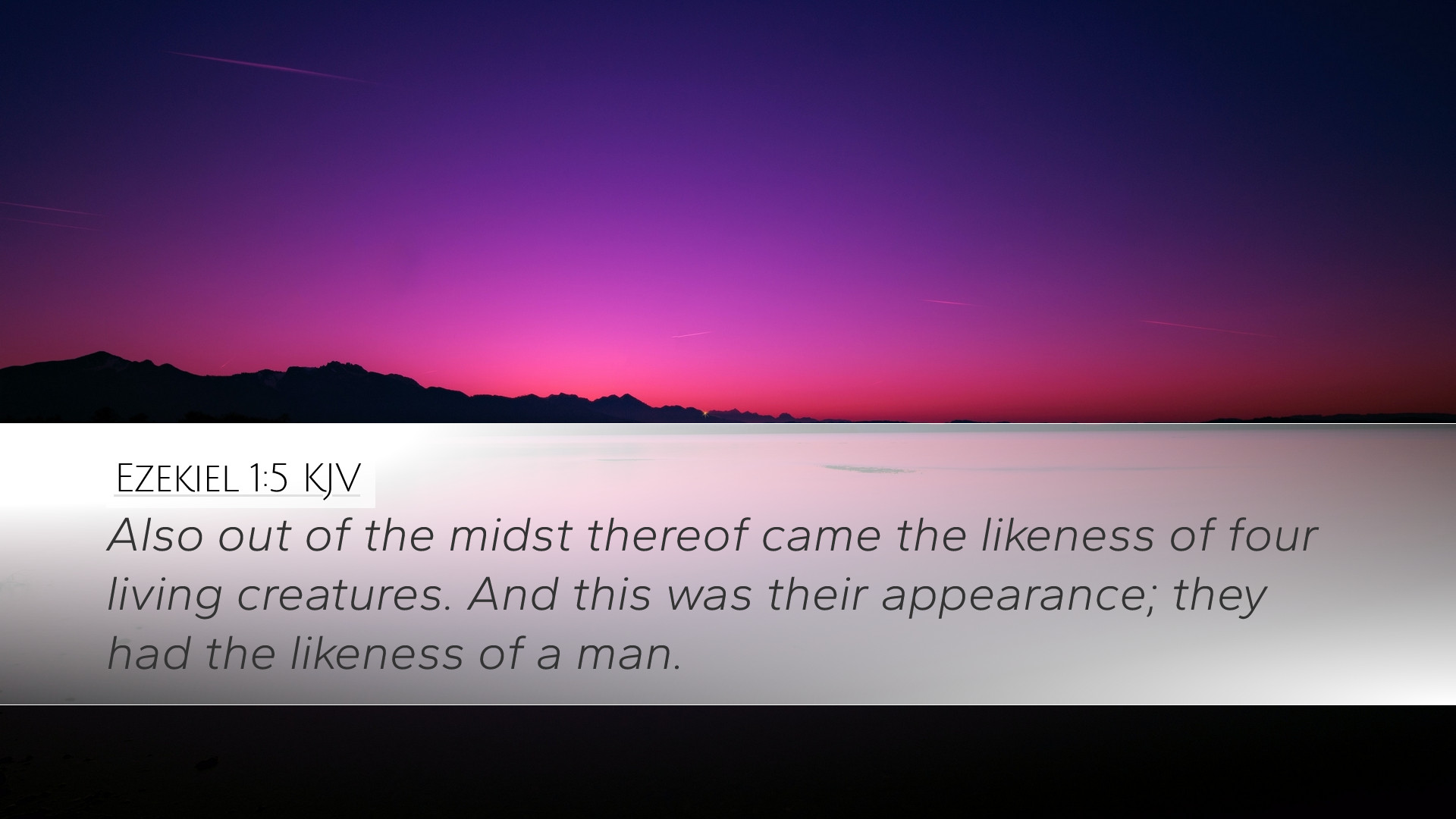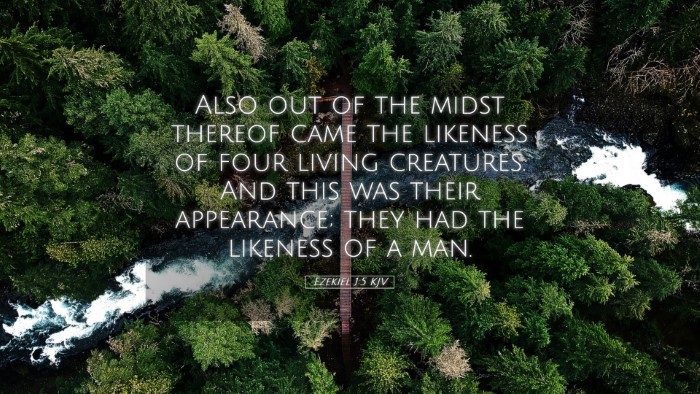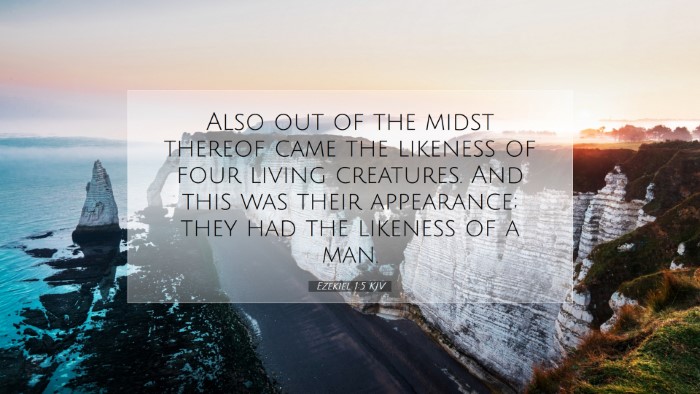Ezekiel 1:5 Commentary
Bible Verse: "And out of the midst thereof came the likeness of four living creatures. And this was their appearance; they had the likeness of a man." (Ezekiel 1:5)
Introduction
The opening vision of Ezekiel is one of profound significance and complexity, portraying the majesty and mystery of God’s presence. This commentary draws insights from renowned public domain scholars such as Matthew Henry, Adam Clarke, and Albert Barnes, exploring the theological ramifications of Ezekiel 1:5. The verse introduces the prophetic imagery that encapsulates the nature of divine revelation and the epiphany of the glory of God.
The Context of Ezekiel's Vision
Before diving into the specifics of Ezekiel 1:5, it is essential to understand the historical context in which Ezekiel is situated. He prophesies during a time of exile and despair, calling to a nation that has strayed from God's covenant. In this context, God’s revelation is vital; it is not merely a message of judgment but also one of hope and restoration.
The Four Living Creatures
The verse indicates that from the midst of the divine glory, four living creatures emerge. This phrase is significant for several reasons:
- Symbolism of Completeness: The number four often symbolizes universality and completeness in biblical literature, representing all of creation and God's dominion over it (Henry).
- Attributes of the Creatures: While Ezekiel outlines their appearance in later verses, it is crucial to recognize that these living beings embody qualities of strength, intelligence, and divine service (Clarke).
- Representation of Divine Majesty: The creatures serve to mediate God's presence, emphasizing that in His glory, He retains sovereign control over all creation (Barnes).
The Likeness of a Man
As the verse concludes with the mention of the likeness of a man, various interpretations emerge:
- The Human Element: The likeness of a man signifies the relationship between the divine and humanity. It suggests that God communicates in ways that humanity can comprehend, bridging the gap between the Creator and His creation (Henry).
- Christological Foreshadowing: Some interpretations see this as a precursor to the incarnation of Christ, where God becomes man to redeem humanity (Clarke).
- Theological Implications: Referring to the human likeness also illustrates God's sovereignty over human affairs and His will to engage with humanity on a personal level (Barnes).
Application for Believers
The profound imagery of Ezekiel 1:5 offers significant lessons for contemporary believers:
- Understanding God’s Nature: This verse challenges believers to recognize the majesty of God in their personal lives and the cosmos. Acknowledging God’s creative authority encourages reverence and worship.
- Your Purpose in Creation: Believers are reminded of their role as stewards of God's creation, reflecting His image in the world. This calls for ethical living and active participation in God’s redemptive work.
- Embracing Divine Revelation: Just as Ezekiel is called to observe and proclaim, so too are believers invited to be attentive to God's revelations, whether through prayer, study, or communal worship.
Conclusion
Ezekiel 1:5 serves as a gateway into understanding the complexities of God’s revelation and presence. The symbolism of the four living creatures, paired with the likeness of a man, invites profound reflection on the nature of God and His interaction with humanity. These verses lay foundational aspects for further exploration of Ezekiel’s prophecies and the broader biblical narrative.
As we consider the theological implications and applications, it becomes clear that these ancient words possess a timeless significance, encouraging believers, theologians, and scholars to delve deeper into the mysteries of God and His creation.


